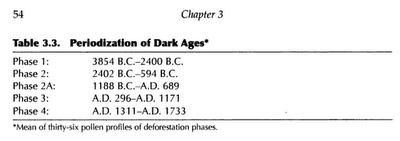The term "Empire" here is honored somewhat in the breach. We have so little information on some of the societies we have been discussing that we have no way of knowing if they had any imperial
aspirations..
The main point of these exercises is to demonstrate how many lost cultures there are out there beyond the usual Rome, Mayan, Easter Island, et cetera that you seem to be endlessly discussed. Just as if you took all people from all time, the typical person is already dead, the same can be said for civilizations. The typical civilization is dead. And not only are they dead, but in some cases we have a hard time even figuring out that they ever existed, in spite of their often large size, and extended period on the earth.
Today's group was around for about 1,500 years, in an area today that would span multiple countries. We have no idea what they called themselves.
The Old World Europe Danube Valley
Culture was an early, relatively sophisticated agricultural culture that
thrived before the foundation of the first cities in Mesopotamia and
Egypt. Its timeline roughly coincides
with what is known as the copper age, or Chalcolithic
period. Chalco is derived from the Greek word for copper, and lithic which
generally refers a cultural phase with an emphasis on tool use.
 |
| The Danube Thinkers - over 3,500 years before Rodin's Dante (Thinker) |
In the area of Southeast Europe (Bulgaria, Rumania, Moldova, and
portions of the Ukraine, they thrived from the fifth century and first half of
the 4th millennia (5,000-3,500 BCE). Note that Ötzi the Iceman is actually closer to our time (~3,300 B.C) than these folks. Ötzi was found with a cooper axe in his possesion, although he was from an adjacent area, likely related to the Mondsee folk, not ours.
 |
| Map showing Old Europe. The Cucuteni were a particular group featured in a museum tour (NYT) |
They are known for their female “goddess” figurines.
 |
| Clay fire female Cucuteni figure (from NYT) |
 |
| Vinca aphabet -runes (from here) |
There collapse was relatively sudden. Around 4300-4100BC, over 600 of their
settlements were burned and abandoned.
However, as obvious from the dates, that did not outright end their
culture. The exact cause of their decline
is unknown. At least some of the problem appears to have been the arrival of Indo-European horsemen on the adjoining steppes. Although these would not have been the mounted horse archers that came latter, the strategic mobility of mounted footmen (hobelars) can be difficult for sedentary folks to handle.
However, based on pollen analysis, a number of cultures throughout
the West were undergoing stress, starting around 3800BCE. A theory, with some data to back it up, notes
that pollen counts show an increased deforestation of the landscape. With this deforestation, there was likely
higher population counts, and decreased soil productivity. Shifts in climate would have had a more
devastating impact. Some researchers
refer to the 3,800 BCE to 3,200BCE, as the first recorded Dark Ages. A dark age that may have effected as great of
an area as the much better known one that started around 1,200 BCE.
Sing C. Chew, Rowman & Littlefield, Lanham MD, 2007
From an empirical analysis of the trend lines of arboreal pollen, table .32 presents forty arboreal pollen profiles of deforestation and reforestation starting from as early as 3854 B.C. These profiles cover four geographic regions of the world: western Europe, central and eastern Europe including Russia [our Old World Danube folk] , northern Europe, and the Mediterranean. With the exception of Byelorussia (Dolgoe), Hungary (Lake Balaton), Latvia (Lake Rudushskoe), an Russia (Chabada Lake) pollen profiles, all C calibrated.
If we examine table 3.2, despite the fact that historians and archaeologists specialising in the Ancient World did not identify a Dark Age period in the fourth millennium B.C., it seems that twenty-nine pollen profiles indicate that there was a phase of deforestation during the fourth century millennium B.C. Not only do the pollen profiles exhibit such a period of deforestation, they also reveal the widespread geographic coverage of the degradation of areas in Russia and the Ukraine through to Spain and Syria. It should not be assumed that this was the first phase of deforestation in world history, as the available data are quite limiting. It might perhaps be the first phase of anthropegenically induced deforestation following the Neolithic Revolution.
 |
| This table is the summation table of Table 3.2 noted above. |
No comments:
Post a Comment